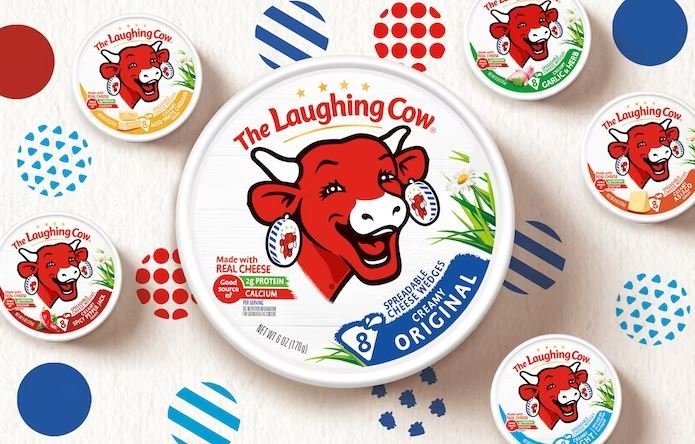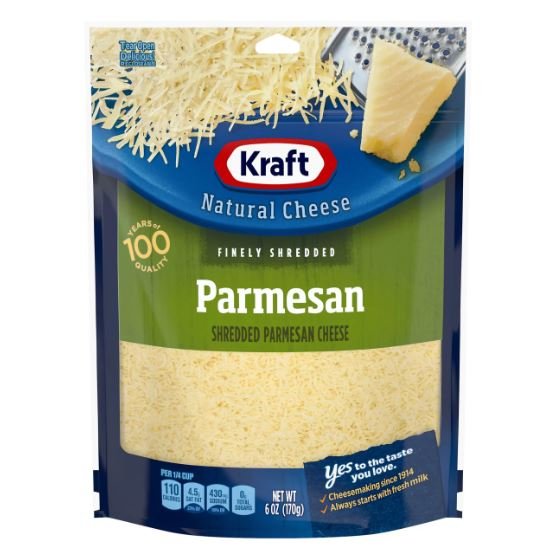Lactose is a form of sugar found in milk and other dairy products. Using the enzyme known as lactase, the body breaks down into smaller pieces and digests lactose at a very tender age. However, some people lose the ability to digest lactose over time, and they are called “lactose intolerants.”
It is undoubtedly true that cheese has lactose, just like yogurt and milk. However, the lactose content of cheese differs from cheese to cheese. This is to say that not all cheeses have the same lactose content.
Does cheese have lactose? If it does, to what extent? What are some of the cheeses lower in lactose, amongst others, are the likely questions this article tends to provide answers to?
How Much Lactose Is In Cheese?
Like other dairy products, cheese has lactose, although many kinds of cheese have low and immeasurable quantities of lactose. Compared to milk and other dairy products, cheese happens to be very low in lactose.
For instance, most cheeses contain less than 2 grams of lactose per serving. This is because the lactose content of cheese is drained up during the cheese-making process. The whey (liquid) has close to 90% of the lactose in cheese; during the processing, before the cheese is made, the whey is drained from the curds, which removes relatively more percent of the lactose. The whey is mostly used to produce soft and fresh cheeses like brie, while the curds are for hard-aged cheeses like cheddar.
As a result, soft and fresh cheeses tend to have more lactose than hard-aged cheeses. Longer-aged cheeses tend to get firmer; hence it loses more lactose as it is continuously aged for a long while. This is to say that the longer a cheese is aged, the less lactose content it gets in the final product.
Interestingly, some cheeses are lactose-free. Yes, cheese can be lactose-free when aged excessively. The longer a cheese is aged, the lower the amount of lactose it gets. So when cheese is aged for a whole long while, there is a possibility that the lactose content might be drained up through the aging process. However, brings forth lactose-free cheese as a finished product.
In a nutshell, soft and fresh cheeses have higher amounts of lactose. Hard or firm cheeses have little traces of lactose, while extremely aged hard cheeses sometimes are lactose-free depending on how long it was aged.
What Is The Best Low-Lactose Cheeses?
Most cheeses have lower traces of lactose; therefore, many kinds of cheese belong to this bloc. However, this does not mean that each cheese in this bloc has the exact lactose content. The amount of lactose each contains varies from one to another.
Below is a handy guide to some of the well-known low-lactose cheeses;
1. Cheddar
Cheddar cheese can be styled into various types ranging from mild, premium, short, and many more, and the only difference between them is the amount of aging each was exposed to. Mild cheddar can be aged 2-4 months, while premium cheddar lasts at least 2-5 months. Cheddar is a cheese that randomly finds its way to our plates often.
It is very low in lactose; while mild cheddar contains about 0.0 to 2.1% lactose, premium cheddar contains about 2.1% lactose in a serving.
2. Parmesan Cheese
Second, on the list is Parmesan cheese, also known as Parmigiano-Reggiano. Parmesan is an Italian cheese aged from about 12-37 months. Grated Italian parmesan cheese contains about 2.9 to 3.7% lactose, while hard-aged parmesan has about 0.0 to 3.1% lactose in a serving.
3. Swiss Cheese
A lot of cheese falls under the bloc of ‘swiss cheese”. However, only Emmental and Gruyere are the true varieties of Swiss cheese; others are produced in the USA to emulate the unique Swiss cheeses. Swiss cheese has about 0.0 to 3.4% of lactose.
However, processed swiss cheese contains 0.0 to 2.1% lactose per serving.
4. Camembert
Camembert is a bit similar to brie, made from cow milk. It contains very little trace of lactose. It contains relatively 0.0 to 1.9% of lactose per serving.
5. Blue Cheese
Although blue cheese is not for everybody, it is awesome and contains relatively few traces of lactose. Blue cheese contains from 0.0 to 2.6% of lactose per serving.
Practically, soft, fresh, and wet cheeses such as ricotta and other creamy cheeses contain higher amounts of lactose. Even though they generally have more lactose than their hard-aged counterparts, they still don’t have much of it. For instance, creamy cheeses have just one gram of lactose per serving, while cottage cheese contains not more than 3 grams of lactose per serving.
While it is true that only a few kinds of cheese are a bit higher in lactose, we must keep serving sizes in mind. Therefore, as lactose intolerant, you don’t need to kick a particular cheese out of your diet because you think it is low-lactose or high-lactose. You should try each cheese to know if it is healthy.
You shouldn’t give up on all cheeses just because cheeses have lactose and you are lactose intolerant. Even the cheeses perceived to be high in lactose are slightly higher than their low-lactose counterparts. Therefore, you should eat a little piece of each cheese to know what is good for your health.
However, according to the rule of thumb, the harder and more aged a cheese is, the less lactose it is likely to contain. Soft, wet, and fresh cheeses have slightly higher lactose than the harder, aged cheeses.
How Can Cheese be Incorporated Into a Lactose-free Diet?
Incorporating cheese into a lactose-free diet requires careful consideration and knowledge of lactose content in different cheese varieties. While cheese typically contains lactose, there are strategies to enjoy it while minimizing lactose intake.
- Choose low-lactose cheeses: Opt for aged cheeses like Cheddar, Swiss, Parmesan, and Brie, as they generally have lower lactose levels. These cheeses undergo a natural fermentation process that breaks down lactose, making them more tolerable for individuals with lactose intolerance.
- Gradually increase tolerance: Some individuals with lactose intolerance may be able to tolerate small amounts of lactose. Start by consuming small cheese portions and gradually increasing the quantity, monitoring your body’s response. This method allows you to determine your lactose tolerance level.
- Pair cheese with lactose-digestive aids: Consider pairing cheese with lactase supplements or lactase-fortified dairy products. These aids provide the enzyme lactase, which helps break down lactose, reducing the likelihood of symptoms.
- Experiment with dairy-free cheese alternatives: To avoid lactose completely, explore dairy-free cheese alternatives made from soy, nuts, or coconut. These products mimic the texture and flavor of cheese while being lactose-free.
- Read labels and seek professional guidance: Always read labels and ingredient lists to ensure cheese products are lactose-free or have low lactose content. Additionally, consult a healthcare professional or registered dietitian for personalized advice on incorporating cheese into your lactose-free diet.
Can Lactose Intolerant Individuals Eat Cheese?
Yes, lactose-intolerant individuals can potentially eat certain types of cheese. While cheese is made from milk and contains lactose, the lactose content can vary depending on the cheese type and aging process. Aged cheeses like Cheddar, Swiss, Parmesan, and Brie have lower lactose levels than fresh cheeses. This is because the aging process allows bacteria to break down some lactose.
Lactose intolerance occurs when the body lacks the enzyme lactase needed to digest lactose. However, some lactose-intolerant individuals may still be able to tolerate small amounts of lactose without experiencing symptoms. It’s important to note that individual tolerance levels can vary, and some people may need to avoid cheese altogether if even small amounts of lactose cause discomfort.
Lactose-intolerant individuals should experiment with different types of cheese and monitor their body’s response. Consulting with a healthcare professional or a registered dietitian can provide personalized guidance on managing lactose intake and incorporating suitable cheeses into a lactose-free diet.
How Can I Determine the Lactose Content in Different Types of Cheese?
Determining the exact lactose content in different types of cheese can be challenging, as it can vary between brands and even within the same type of cheese. However, there are a few methods you can try to get an idea of the lactose content:
- Read product labels: Some cheese manufacturers provide information about the lactose content on their product labels. If available, look for indications such as “lactose-free” or specific lactose values.
- Contact the manufacturer: You can contact the cheese manufacturer directly if the lactose content is not mentioned on the label. They may be able to provide you with the lactose content information for their specific cheese products.
- Research databases and resources: Some online databases and resources provide general lactose content information for various foods, including cheese. While not always comprehensive, they can give you a rough estimate or a comparison between different cheese varieties.
Conclusion
Understanding the lactose content in cheese is crucial for making informed decisions about its consumption. For those with lactose intolerance, it’s important to know that certain types of cheese, particularly aged varieties like Cheddar, Swiss, Parmesan, and Brie, tend to have lower lactose levels and may be better tolerated.
However, individual tolerance to lactose can vary, and some people with lactose intolerance may still need to limit or avoid cheese altogether. Listening to your body and noticing any symptoms after consuming cheese is essential. Numerous plant-based cheese alternatives are available for those who follow a dairy-free diet, made from ingredients like soy, nuts, or coconut. These options allow individuals to enjoy cheese-like flavors and textures without lactose.



















